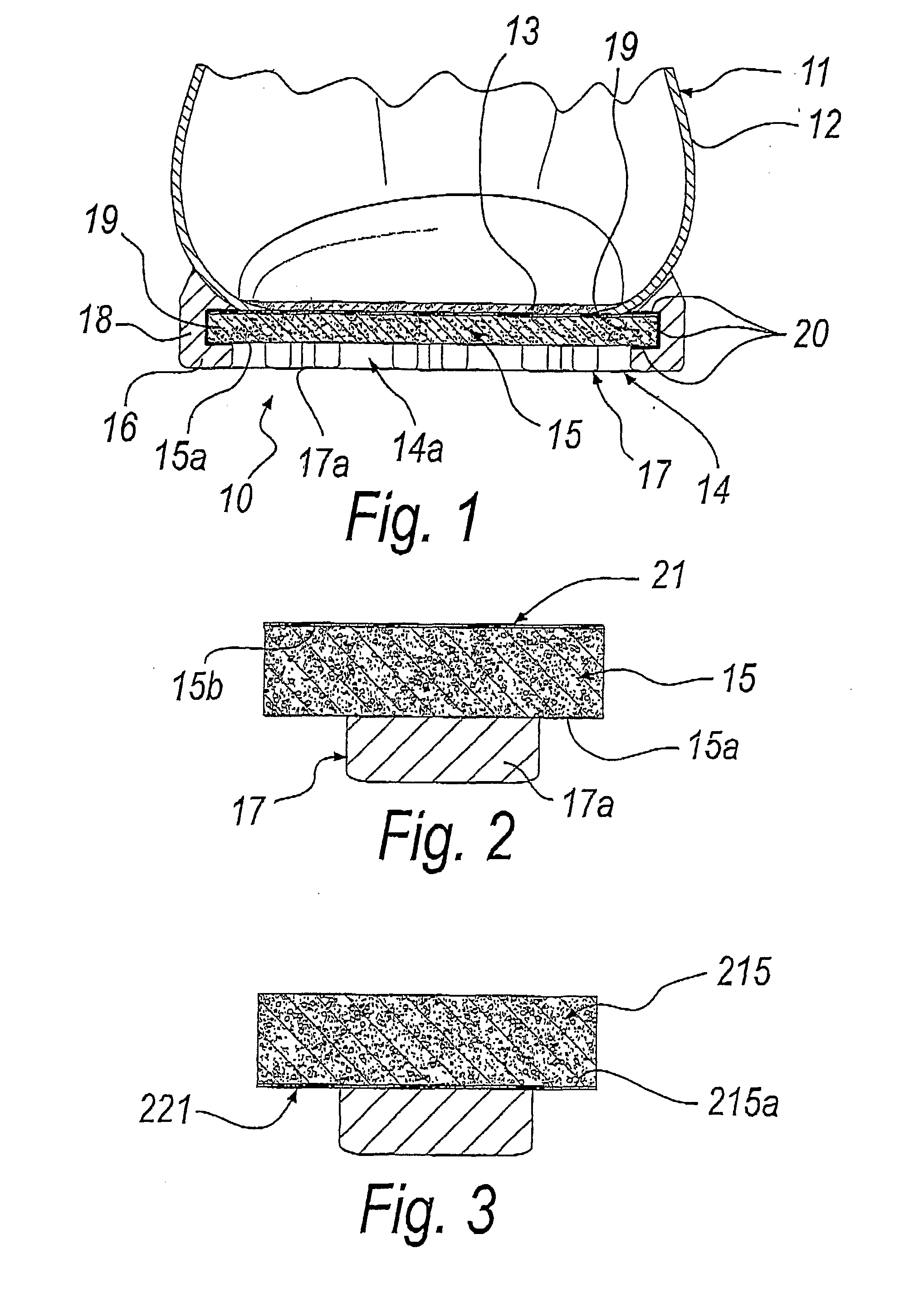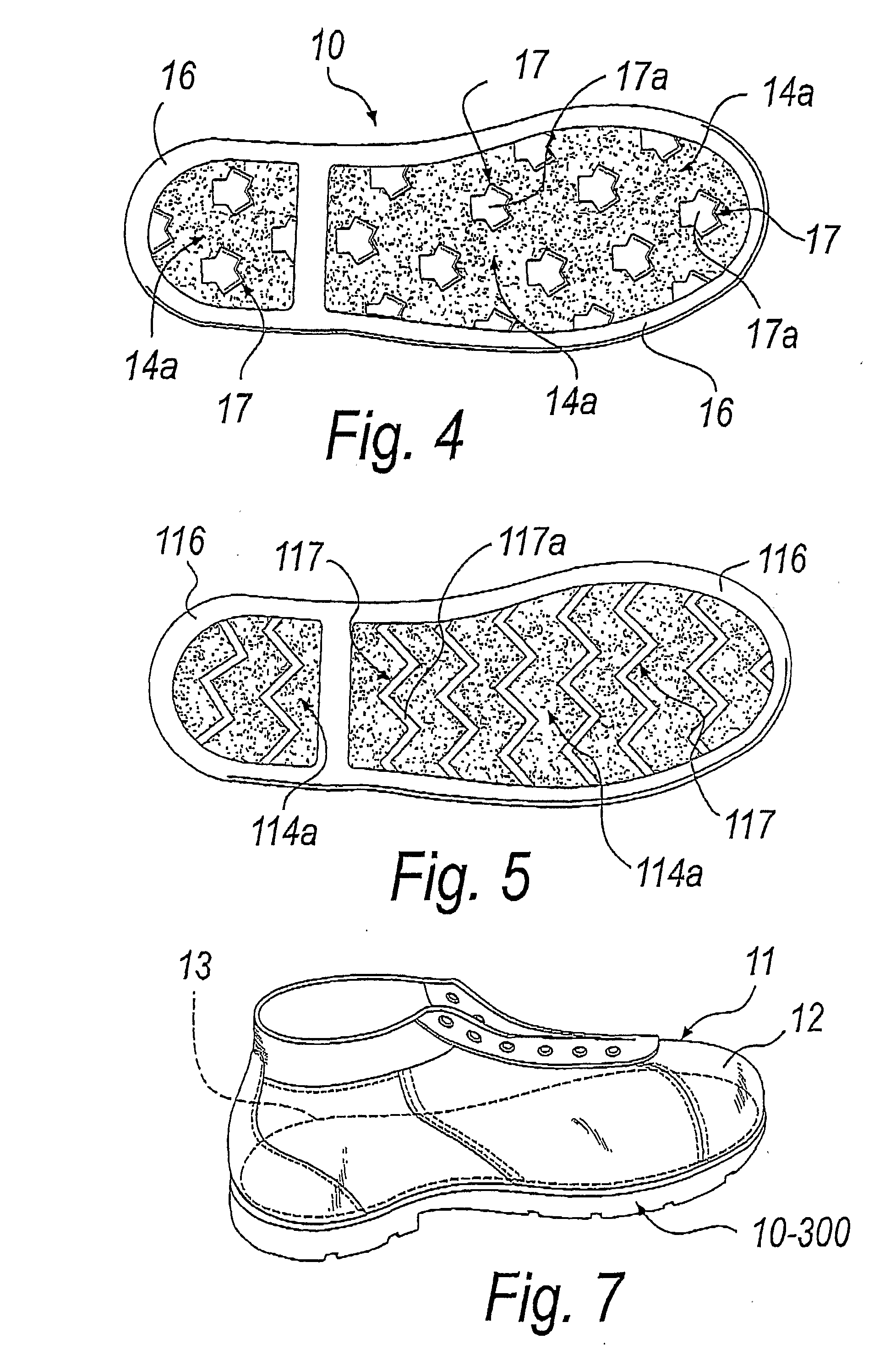Breathable Waterproof Sole For Shoes
a technology for waterproof soles and shoes, applied in the field of breathable waterproof soles for shoes, can solve the problems of limiting breathability, not having strictly waterproof characteristics, and not adequately meeting the requirements of waterproofing said soles, etc., and achieves the effects of breathable waterproof, high breathability, and resistance to wear and damag
- Summary
- Abstract
- Description
- Claims
- Application Information
AI Technical Summary
Benefits of technology
Problems solved by technology
Method used
Image
Examples
Embodiment Construction
[0045] With reference to the figures, a first embodiment of the sole according to the invention is generally designated by the reference numeral 10.
[0046]FIG. 1 is a transverse sectional view of a shoe related to the region of the sole 10; this figure clearly shows that the sole 10 comprises, in this embodiment, two layers, which compose respectively a lower layer 14 and an upper layer 15 that is permeable to water vapor.
[0047] Both of the layers 14 and 15 are structural and therefore have a supporting function; in particular, the lower layer 14 has a supporting structure so as to form the tread of the sole 10, while the upper layer 15 forms the foot supporting base and has elasticity and flexibility characteristics.
[0048] In order to allow breathability of the upper layer 15, the lower layer 14 has portions 14a that are open onto the upper layer 15, so that it is exposed directly to the external environment; such open portions 14a are described in greater detail hereinafter.
[00...
PUM
 Login to View More
Login to View More Abstract
Description
Claims
Application Information
 Login to View More
Login to View More - R&D
- Intellectual Property
- Life Sciences
- Materials
- Tech Scout
- Unparalleled Data Quality
- Higher Quality Content
- 60% Fewer Hallucinations
Browse by: Latest US Patents, China's latest patents, Technical Efficacy Thesaurus, Application Domain, Technology Topic, Popular Technical Reports.
© 2025 PatSnap. All rights reserved.Legal|Privacy policy|Modern Slavery Act Transparency Statement|Sitemap|About US| Contact US: help@patsnap.com



